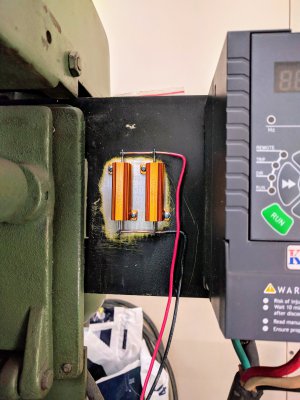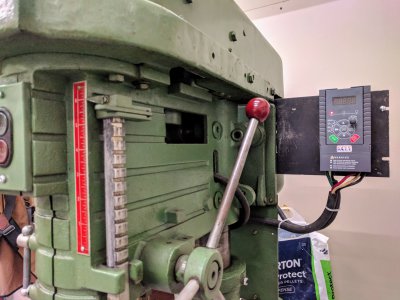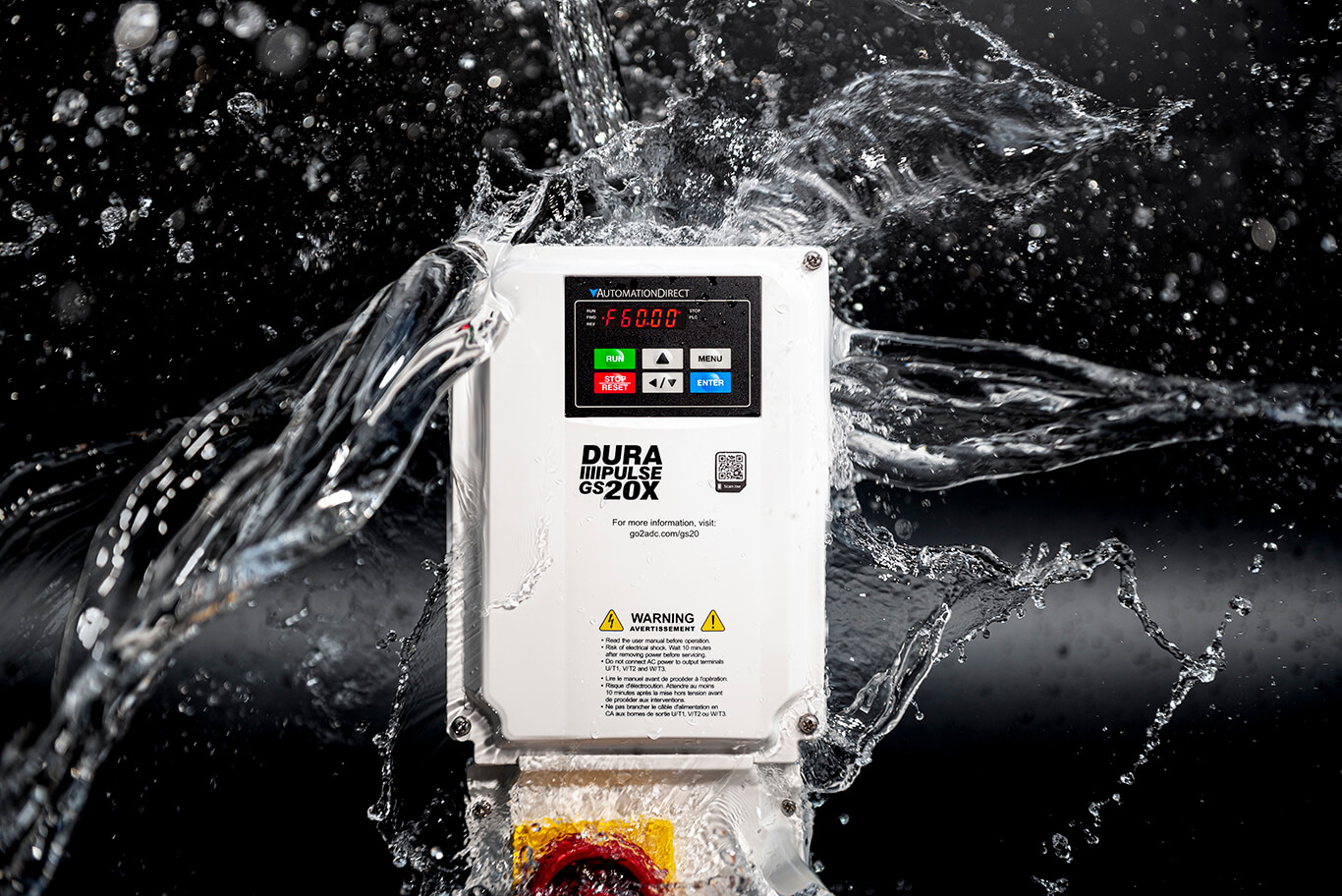- Joined
- Oct 30, 2019
- Messages
- 197
Hi team,
I purchased a cheap $90 KCLY "2HP" VFD off eBay last year for my new drill press. It is amazing what $100 gets you in terms of configuration (and documentation) for industrial lego pieces on a budget!
The manual indicated that the unit had terminals and configuration for external power dissipation, as well as some internal capacity when external resistors are not available.
In the months I have owned it, the internal braking does largely meet my needs -- but in certain situations I can trip it, unless I adjust many settings to be very conservative.
So, I removed the plastic knockouts covering the PB+ and PB- terminals, and wired in the correct resistors mounted on an aluminum heatsink. However, no combination of settings results in the external resistors being used. I have reached the conclusion that this $90 product, unsurpririsingly, doesn't have the extra bits to support external power braking.
--
That all said, I need a VFD for another project, and can move this one to it. This leaves me looking for a VFD that supports external power braking resistors, so I can put it on the larger drill press. I'd love if it could use the existing resistors I have mounted, 100 ohm (two 200ohm in parallel), good for up to 100W of dissipation, which I can of course reconfigure to 50ohm or 200ohm ohr 400ohm if needed to suit a particular VFD
Any suggestions for budget VFDs that actually work with external power resistors? I do not mind cheaper import devices, after being impressed with what is available - of course I will take the ratings at face value and over-size the unit...
Thanks all - I just don't trust my eBay browsing to turn up results that actually will use the external resistors, after being burned last time. I am of course not complaining - you get what you pay for...


I purchased a cheap $90 KCLY "2HP" VFD off eBay last year for my new drill press. It is amazing what $100 gets you in terms of configuration (and documentation) for industrial lego pieces on a budget!
The manual indicated that the unit had terminals and configuration for external power dissipation, as well as some internal capacity when external resistors are not available.
In the months I have owned it, the internal braking does largely meet my needs -- but in certain situations I can trip it, unless I adjust many settings to be very conservative.
So, I removed the plastic knockouts covering the PB+ and PB- terminals, and wired in the correct resistors mounted on an aluminum heatsink. However, no combination of settings results in the external resistors being used. I have reached the conclusion that this $90 product, unsurpririsingly, doesn't have the extra bits to support external power braking.
--
That all said, I need a VFD for another project, and can move this one to it. This leaves me looking for a VFD that supports external power braking resistors, so I can put it on the larger drill press. I'd love if it could use the existing resistors I have mounted, 100 ohm (two 200ohm in parallel), good for up to 100W of dissipation, which I can of course reconfigure to 50ohm or 200ohm ohr 400ohm if needed to suit a particular VFD
Any suggestions for budget VFDs that actually work with external power resistors? I do not mind cheaper import devices, after being impressed with what is available - of course I will take the ratings at face value and over-size the unit...
Thanks all - I just don't trust my eBay browsing to turn up results that actually will use the external resistors, after being burned last time. I am of course not complaining - you get what you pay for...


Last edited:


